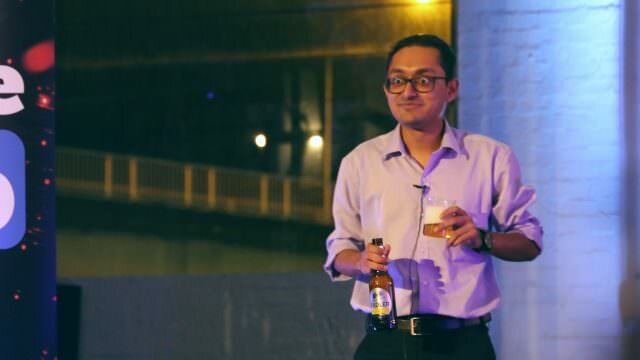Last updated February 8, 2018 at 10:37 am
We’ve seen it in sci-fi, but now scientists from the University of Bristol have developed a powerful acoustic tractor beam that can hold objects in mid-air.
Researchers have made every kid’s dream come true by demonstrating the world’s most powerful acoustic tractor beam. All of a sudden, Star Wars and Doctor Who seem a lot more plausible.
Until now, the size of objects that can be picked up by acoustic tractor beams has been limited to smaller than the wavelength of sound.
However, the team from Bristol University developed a way to shape the sound waves into stable “tornadoes of sound”, which can contain much larger objects.
Acoustic tractor beams use the power of sound to hold particles in mid-air, and unlike magnetic levitation, they can grab most solids or liquids.
Efforts until now have been unsuccessful as the spinning vortex of sound has ended up transferring some of its rotating motion objects larger than the wavelength of the sound, causing them to orbit faster and faster until they are flung out.
A twister with a silent core
Intertwined short vortices of opposite directions are emitted to trap and stabilize the particle. Credit: University of Bristol
The researchers from Bristol instead created fluctuating vortices that alternated direction, creating a twister-like structure with loud sound surrounding a silent core.
These alternating vortices let them control the rate of rotation and stabilise the tractor beam.
Using alternating directions of rotation neutralises the orbital motion of an object in the vortex, keeping it steady in the centre.
It can also be used to controllably spin an object by creating a slight bias towards one direction of vortex rotation.
Using ultrasonic sound waves at a pitch of 40kHz, silent to humans but a similar pitch to that which only bats can hear, they then found the size of silent core could be increased in size, allowing it to hold a styrofoam ball 2 centimetres in diameter.
This makes the sphere over two acoustic wavelengths in size (the wavelength of 40kHz sound in air is 8.6mm), the largest yet trapped in a tractor beam.
“Acoustic researchers had been frustrated by the size limit for years, so its satisfying to find a way to overcome it,” said Asier Marzo, who led the research at the University of Bristol.
“Now, the particle size is limited only by the amount of acoustic power that we can generate.”
Related: The science of science fiction with Alan Duffy
The styrofoam ball trapped in the centre of a 40kHz ultrasonic generator of virtual vortices. Credit: University of Bristol
Not only could the researchers increase the size of the silent core to hold objects larger than ever before, but they could precisely adjust it to allow them to stably trap objects of different sizes.
“In our experiments, we picked the aperture to match the size of the object, that allows to keep the objects stably trapped,” Dr Marzo told us.
“If the aperture is too small, the particle will get ejected whereas the particle will bounce inside if the aperture is not tight enough.
“Air flow in the area did not seem to affect the particles but pushing it with the finger was enough to knock them out.”
This flexibility and stability could increase the applications for the tractor beam in the future. It opens the door to the manipulation of drug capsules or micro-surgical implements within the body, and even container-less transportation of delicate samples.
It could also be adapted to allow assembly of delicate objects without needing to touch them.
Levitating humans
Some reports suggested that the tractor beam could be used to levitate humans, however Marzo told us there were some limitations to that claim.
“We did some simulations about what it would take to levitate a human but for now I do not see it becoming a reality.
“However, we can think about doing it in the international space station, where you do not need to defy gravity and it could prevent astronauts from floating adrift.
“The vortex will be placed laterally so it would be like a human going inside a horizontal tube of sound, but even in that case the human could slide out the sides,” he added.
This suggests that to escape the tractor beam of an Empire battlecruiser, Princess Leia needed to steer out the sides of the beam, like escaping a rip. However it could have been an uncomfortable ride.
Dr Marzo and his colleagues are now working on increasing the size of the silent core further, and increasing the range of the tractor beam.
However, the study does prove that larger objects are able to be trapped and controlled by an acoustic tractor beam using frequencies far above what humans can hear. From here, the only way is up.
The research was published in Physical Review Letters.
Related:
Science fiction to kick off 2018
Star Wars – The science awakens
How Felix fell faster than a speeding bullet
The Grandfather Paradox
Follow us on Facebook, Twitter and Instagram to get all the latest science.






























































































































































































































































